The Be-2, light observation biplane
In a nutshell, the Beriev BE-2 was a two-seat dedicated biplane observation and reconnaissance catapulted floatplane in service with the Soviet Navy when WW2 broke out. Only 12 has been manufactured, retired from 1942. It was originaly designed as Beriev KOR-2 but designation was later changed for production. It was designed at a time, battleships and cruisers of the Soviet Navy were provided the obsolescent license-produced Heinkel He 55. About 40 of the latter were produced, only for USSR, with a central boat-hull and wings floats, but anemic Siemens-Halske Sh 20 360 kW (480 hp) engine, providing a top speed of 194 km/h (120 mph, 100 kn) and range of 800 km (500 mi, 430 nmi).Design development
As per requested in 1935, a replacement of the HD 55 was planned, idealy to be designed and produced entirely in USSR. The KOR-1 was developed very quickly from early 1936, by the Design Bureau under the leadership of G. M. Beriev. The prototype was ready and made its first flight in April 1936. It did not pass state tests however. But due to the lack of alternatives, it was ordered at the Aviation Plant No. G. Dimitrov, into a small order of 12 floatplanes, in service in 1938 and deployed in 1939-1940, used until 1942 on the frontline.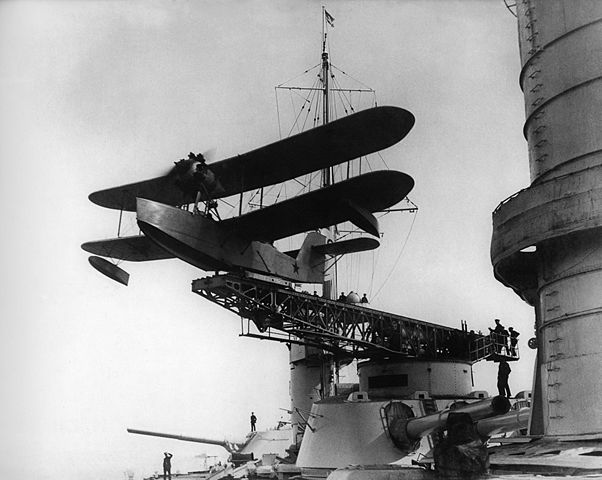
The Previous heinkel He-55D here catapulted from a Gangut-class battleship in the early 1930s
The Kor-1 (Acronym corresponding to the naval reconnaissance type 1) was nevertheless quite an achievement for the fledgling Soviet aviation at the time, as the first domestic seaplane, designed specifically to be launched from a ship's catapult, which came with extra requirements for ruggedness. The main advantage of catapults developed at the time, over classic WW1 seaplane management, just lowered on a calm sea only, at full speed and against the wind, was to take off from a stationary or moving ship practically in all weather. Recovery was another affait, though. The violence of the acceleration took a strain on the plane structure, at the time mostly wooden/metal framing covered with canvas, and special care had to put on its general structural rigidity. The Heinkel 55D was mostly in service with the four modernized (or yet to be so) Gangut class battleships.
Yet, in the mid-1930s, new light cruisers started to enter service with the Soviet Navy, like the Kirov class and modernized vessels of the WW1-era Svetlana class such as the Chervona Ukrainia, Profintern, Krazny Krim, and the entirely rebuilt Chervonia Ukraina. All were supposed to be equipped with catapult reconnaissance aircraft, to screen the fleet. To equip these ships, it was necessary to create at first a domestic catapult, and procure aircraft for them.
Assignment to this development was received by the Central Design Bureau of Marine Aircraft Construction (TsKBMS), in Taganrog. The bureau was under the leadership of G. M. Beriev, a future household name for naval aviation in decades. According to the tactical and technical requirements, the new seaplane had to possess good seaworthiness to land in high seas, and having an all-metal anti-corrosion frame. According to these conditions, wings also had to fold, and strict conditions for dimensions and take-off weight were to be respected as well.
These requirements also stipulated a scheme, as a single-float seaplane. Duties envisioned were aerial reconnaissance, gunfire corrections and common artillery spotting, also in conjunction with coastal artillery, so to carry a radio operator with a good emitter. But the KOR-1 also was tasked of bombing and attack targets, in diving for more precision, which also imposed more ruggedness.
According to all these stringent assignments, the model was also supposed to generate a civilian version, a mail plane for the Arctic and fishing area exploration. Beriev's initial prototype aircraft was ready in April, but there is confusion among authors. It seems it made its first official flight only in September 1936. Intensive tests were carried out, revealing many flaws. In the end, the KOR-1 was rejected, as not meeting the requirements of the military, however, due to the pressure for a replacement of the old He-55D, it was nevertheless accepted for a small production as transitional model before more modern ones could be designed.
At the time, TsKBMS, named simple as "Beriev" manufacting plant was small, and already swamped by a very intense production program. Notably it had to deal with the older, large-scale production of the larger MBR-2, a complex seaplane and later the licensed GTS (Consolidated PBY Catalina) and domestic MDR-6. So in addition to the prototype, all the facility can do was to provide the Navy with just 12 serial models. It was enough to equip all four battlesips and cruisers in need however, with a few spares for a time. For example, the Project 26 light cruisers were to include on paper two KOR-1s plus a catapult. By June 1941, six Beriev BE-2 were assigned to the Baltic fleet, five in the the Black Sea Fleet.
Design Specifics
The seaplane KOR-1 was a single-float biplane, of mixed construction, with central float and underwing floats. The crew consisted of two men, a pilot and observer. It was intended for use as a catapult reconnaissance spotter/dive bomber. Its fuselage had an oval section with a truss frame made of chrome-molybdenum tubes. The nose was made of duralumin, and the rear section and tail covered in linen. The tail section was reinforced with metal bracing.The wings were fully folding, the upper and lower pivoted on an axe to be placed along the fuselage, turning relative to the docking nodes of the center section. The N struts of the central section (over the engine section) and the pillar type between wings were all made of duralumin and very thick and massive. The upper and lower wing were also interconnected by extra bracing cables, ailerons har trimmers located on the upper wing consoles, flaps on the lower ones.
The tail unit had an adjustable stabilizer, with an angle setup adjustable on the ground. The lower part of the plane was not in linen but partially sheathed with duralumin for extra rigidity ans avoid corrosion. The elevator was equipped with a trim tab and the central float, with its four pillars, was also completely made of duralumin. The rudder was equipped with a servo compensator. For the floats, there was a water rudder (tiller) connected to the main rudder of the aircraft at the stern of the float. The central float four struts were also massive and interconnected with extra bracing cables. The underwing floats had two V-shaped struts. These were reinforced aso with bracing.
In the unique experimental land version, a non-retractable wheeled landing gear, with pneumatic shock absorption and tail skid were fitted, which could be replaced with skis in winter.
General Conception
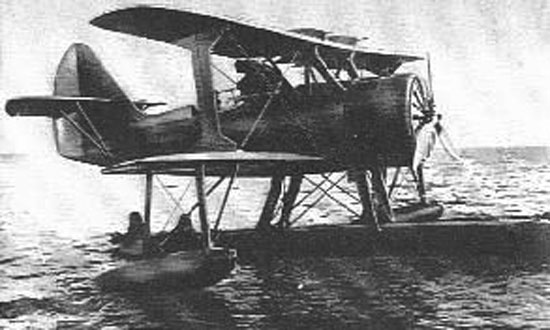
KOR-1
Engine & Performances
The power plant is an M-25 air-cooled piston engine with an HP 635 power. from. A metal propeller with a diameter of 2.9 m. The engine was started by a combined manual and electric inertial starter. The fuselage was equipped with two main fuel tanks with a capacity of 160 liters and one additional 75 liters.Top speed was 245 km/h (152 mph, 132 kn), with a service ceiling of 6,600 m (21,654 ft) and a range of 1,000 km (621 mi, 540 nmi).
Steering of the plane was twofold. The control wiring was mixed: The elevator is rigid, the rudder is cable, the ailerons in the fuselage are rigid, and the wing is cable. The flaps are released from the steering wheel in the cockpit. The water rudder is controlled synchronously with the rudder.
Armament
Armament comprised three ShKAS 7.62 mm light machine guns: Two were located in the center section of the upper wing in fairings, supplied with of 500 rounds for each. Thios installation allowed them to fire just outside the area swept by the propeller. Their angle was setup on the ground. The trigger was installed on the aircraft control stick. Reloading was carried out by using two handles protruding from the lower surface of the upper wing center section. Ammo belts in cartridge boxes were located in the same section. They were changed on the ground. In case of jamming it was very near-impossible to have them starting again.The third ShKAS was installed on the observer's cosckpit, placed on rail-guided pivot turret, with 1000 rounds or ammunitions and a movable visor. Bomb load was appreciable for such nimble model: Two Der-31 racks were mounted on the lower wing consoles, and can carry up to 200 kg total (two 100 kgs bombs). They used electric trigger release with the command located on the pilot control stick. Emergency droppers were also installed in both cockpits.
Equipment
The land version with its non-retractable wheeled landing gear and tail spike had its main undercarriage supports pneumatically cushioned and using the same struts as the central float. Wheels size was 750x125 mm. In winter, they were swapped for skids. Its powerplant was the same M-25, but fitted with a three-blade propeller and a Vatter cowling (NACA for production).The engine was started by the combined manual/electric inertial starter "Eclipse". Avgas was stored in two main tanks of 160 liters each plus a smeller gravity 75 liters model in the fuselage and extra 7 liter tank just for warming up the engine in winter. Aircraft was double as in a trainer. The control wiring comprised a rigid elevator gear, cable for the rudder, air rigid for the ailerons, cabmes for the wings. The elevator trimmer used a handwheel. The rudder trim was adjusted on the ground only. Flaps were manually activated from a steering wheel in the cockpit. The main float's rudder was made synchronous with the main rudder.
Electric power was provided by a 500 W DSF-500 generator coupled with an Eclipse battery (12 V, 120 Ah). It was mounted at the rear of the engine crankcase while the battery was installed left, inside the cockpit. Main voltage was 12V, regulated by a RRK-500 control and distribution box, charging from the generator and distribition by full electric wiring.
There was a standard set of instruments on board: There was for example a warning indicator when reaching critical speed in dive, as the speed indicator was associated with a red light above 300 km/h. Dashboards were different as only the pilot had full instrumentation notably for the engine. The rear cockpit had access to a full radio communication suite with the transceiver RKK (RSRM) station as seen above. There was an intercom for the radio to spek with the pilot and vice versa.
For conducting photo reconnaissance, the aircraft was given a Potte-1 B (AFA-1 B) camera installed in the cockpit of the observer. For high altitude flight, both pilots had access to an oxygen provider KPA-1, two cylinders of 3 liters each and a reducer. Inside a container in the fulselage was also installed a first aid kit, a two-liter tank for drinking water, haversack for travalling on land and all necessary tools plus food rations.
The observer also had access to a flash pistol and belt with 21 rockets, plus two PAR-13 flare parachute rockets, and navigational tools. Both pilot and observers had parachutes and life belts. When swimming, the main float was equipped with a bottom anchor with 25-meter long cable, a small boom and floating anchor plus towing lines.
Specifications Be-2 | |
| Crew: | 2: Pilot, Observer/Gunner |
| Dimensions: | 8.67 x 11.00 x 3.80 m (28 x 36 ft x 12 ft 6 in) |
| Wing area: | 29.3 m2 (315 sq ft) |
| Weight: Light | 1,800 kg (3,970 lb), 2,686 kg (5,920 lb) gross |
| Propulsion: | Shvetsov M-25A radial engine , 522 kW (700 hp) |
| Performances: | Top speed: 245 km/h (152 mph, 132 kn) Service ceiling: 6,600 m (21,654 ft) Range: 1,000 km (621 mi, 540 nmi) |
| Armament - MGs | 2 fixed fwd 7.62 mm ShKAS, 1 flexible for observer |
| Armament - Bombs | 100 kg (220 lb) of bombs |
In service
Books
Емельянов С. Н. Таганрогская авиация. — Таганрог: Стайл-Плюс, 2006. — 360 сЗаблотский А., Сальников А. Первый корабельный разведчик Георгия Бериева // Авиация и Время : журнал. — Киев: АэроХобби, 2003.
Удалов К. Г., Сальников А. И. Самолет КОР-1. — Москва: Авико Пресс, 1994. — 48 с. — (Самолеты ТАНТК им. Г. М. Бериева).
Авиация и Время. Александр Заблотский, Андрей Сальников. Первый корабельный разведчик Георгия Бериева.
Шавров В.Б. История конструкций самолетов в СССР до 1938 г.
Симаков Б.Л. Самолеты страны Советов. 1917-1970.
Шавров В. Б. История конструкции самолётов в СССР. 1938-1950. — 4-е изд.. — М.: Машиностроение 2002.
Taylor, Michael J. H. (1989). Jane's Encyclopedia of Aviation. London: Studio Editions.
World Aircraft Information Files. London: Bright Star Publishing. pp. File 890
Links
airwar.ruwikipedia ru
The model corner

General query on scalemates, all kits.
Gallery
Author's illustrations

Standard Be-2, unit unknown, circa 1940
Additional photos
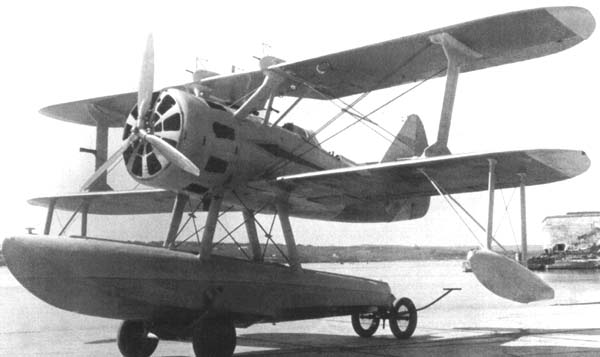
Prototype in 1936

At sea
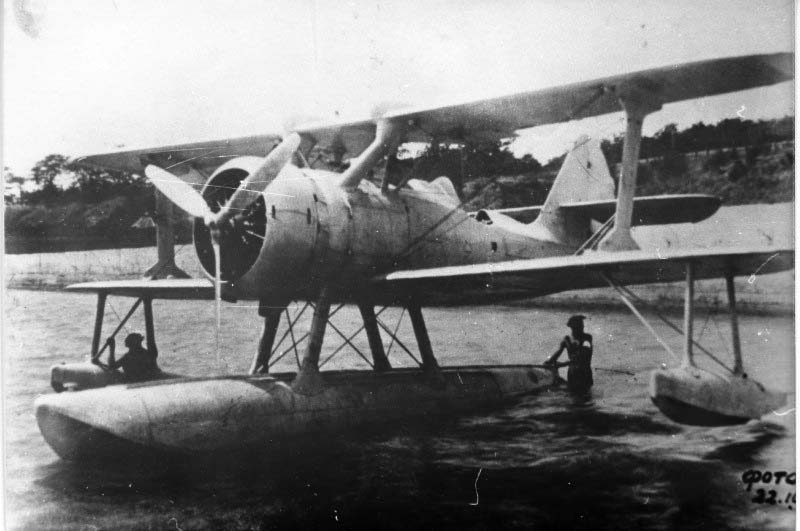
Serial model being pushed in the water to start its flight
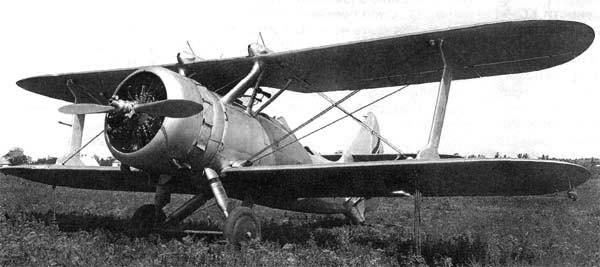
Land-based BE-2

Serial model on floats
- Lohner E (1913)
- Macchi M3 (1916)
- Macchi M5 (1918)
- Ansaldo ISVA (1918)
- Sopwith Baby (1916)
- Short 184 (1916)
- Fairey Campania (1917)
- Sopwith Cuckoo (1917)
- Felixstowe F.2 (1917)
- Friedrichshafen FF 33 (1916)
- Albatros W4 (1916)
- Albatros W8 (1918)
- Hanriot HD.2
- Grigorovitch M5
- IJN Farman MF.7
- IJN Yokosho Type Mo
- Yokosho Rogou Kougata (1917)
- Yokosuka Igo-Ko (1920)
- Curtiss N9 (1916)
- Aeromarine 39
- Vought VE-7
- Douglas DT (1921)
- Boeing FB.5 (1923)
- Boeing F4B (1928)
- Vought O2U/O3U Corsair (1928)
- Supermarine Seagull (1922)
- Blackburn Ripon (1926)
- Fairey IIIF (1927)
- Fairey Seal (1930)
- LGL-32 C.1 (1927)
- Caspar U1 (1921)
- Dornier Do J Wal (1922)
- Rohrbach R-III (1924)
- Mitsubishi 1MF (1923)
- Mitsubishi B1M (1923)
- Yokosuka E1Y (1923)
- Nakajima A1N (1927)
- Nakajima E2N (1927)
- Mitsubishi B2M (1927)
- Nakajima A4N (1929)
- CANT 18
WW1
✠ K.u.K. Seefliegerkorps:
 Italian Naval Aviation
Italian Naval Aviation
 RNAS
RNAS
 Marineflieger
Marineflieger
 French Naval Aviation
French Naval Aviation
 Russian Naval Aviation
Russian Naval Aviation
 IJN Air Service
IJN Air Service
 USA
USA
Interwar
 Interwar US
Interwar US
 Interwar Britain
Interwar Britain
 Interwar France
Interwar France
 Interwar Germany
Interwar Germany
 Interwar Japan
Interwar Japan
 Interwar Italy
Interwar Italy
- Curtiss SOC seagull (1934)
- Grumman FF (1931)
- Curtiss F11C Goshawk (1932)
- Grumman F2F (1933)
- Grumman F3F (1935)
- Northrop BT-1 (1935)
- Grumman J2F Duck (1936)
- Consolidated PBY Catalina (1935)
- Brewster/NAF SBN-1 (1936)
- Curtiss SBC Helldiver (1936)
- Vought SB2U Vindicator (1936)
- Brewster F2A Buffalo (1937)
- Douglas TBD Devastator (1937)
- Vought Kingfisher (1938)
- Curtiss SO3C Seamew (1939)
- Douglas SBD Dauntless (1939)
- Grumman F4F Wildcat (1940)
- F4U Corsair (NE) (1940)
- Brewster SB2A Buccaneer (1941)
- Grumman TBF/TBM Avenger (1941)
- Consolidated TBY Sea Wolf (1941)
- Grumman F6F Hellcat (1942)
- Curtiss SB2C Helldiver (1942)
- Curtiss SC Seahawk (1944)
- Grumman F8F Bearcat (1944)
- Ryan FR-1 Fireball (1944)
- Douglas AD-1 Skyraider (1945)
Fleet Air Arm
- Fairey Swordfish (1934)
- Blackburn Shark (1934)
- Supermarine Walrus (1936)
- Fairey Seafox (1936)
- Blackburn Skua (1937)
- Short Sunderland (1937)
- Blackburn Roc (1938)
- Fairey Albacore (1940)
- Fairey Fulmar (1940)
- Grumman Martlet (1941)
- Hawker sea Hurricane (1941)
- Brewster Bermuda (1942)
- Fairey Barracuda (1943)
- Fairey Firefly (1943)
- Grumman Tarpon (1943)
- Grumman Gannet (1943)
- Supermarine seafire (1943)
- Blackburn Firebrand (1944)
- Hawker Sea Fury (1944)
IJN aviation
- Aichi D1A "Susie" (1934)
- Mitsubishi A5M "Claude" (1935)
- Nakajima A4N (1935)
- Yokosuka B4Y "Jean" (1935)
- Mitsubishi G3M "Nell" (1935)
- Nakajima E8N "Dave" (1935)
- Kawanishi E7K "Alf" (1935)
- Nakajima B5N "Kate" (1937)
- Kawanishi H6K "Mavis" (1938)
- Aichi D3A "Val" (1940)
- Mitsubishi A6M "zeke" (1940)
- Nakajima E14Y "Glen" (1941)
- Nakajima B6N "Jill" (1941)
- Mitsubishi F1M "pete" (1941)
- Aichi E13A Reisu "Jake" (1941)
- Kawanishi E15K Shiun "Norm" (1941)
- Nakajima C6N Saiun "Myrt" (1942)
- Yokosuka D4Y "Judy" (1942)
- Kyushu Q1W Tokai "Lorna" (1944)
Luftwaffe
- Arado 196 (1937)
- Me109 T (1938)
- Blohm & Voss 138 Seedrache (1940)
Italian Aviation
- Savoia-Marchetti S.55
- IMAM Ro.43/44
- CANT Z.501 Gabbiano
- CANT Z.506 Airone
- CANT Z.508
- CANT Z.511
French Aeronavale
- GL.300 (1926-39)
- Levasseur PL.5 (1927)
- Potez 452 (1935)
- Loire 210 (1936)
- Loire 130 (1937)
- LN 401 (1938)
Soviet Naval Aviation
- Shavrov SH-2 (1928)
- Tupolev TB-1P (1931)
- Beriev MBR-2 (1930)
- Tupolev MR-6 (1933)
- Tupolev MTB-1 (1934)
- Beriev Be-2 (1936)
- Polikarpov I16 naval (1936)
- Tupolev MTB-2 (1937)
- Ilyushine DB-3T/TP (1937)
- Beriev Be-4 (1940)
-
Skoda Š-328V
R-XIII Idro
Fokker C.XI W (1934)
WW2
- De Havilland Sea Vixen
- Hawker Sea Hawk
- Supermarine Scimitar
- Blackburn Buccaneer
- Hawker Sea Harrier
- Douglas A4 Skyhawk
- Grumman F9F Panther
- Vought F8 Crusader
- McDonnell-Douglas F-4 Phantom-II
- North Am. A5 Vigilante
- TU-142
- Yak 38 forger
☢ Cold War
✧ NATO
 Fleet Air Arm
Fleet Air Arm
 US Navy
US Navy
☭ Warsaw Pact
Merch

Seafire Mark 45; HMS Pretoria Castle

Zeros vs its aversaries

Aichi D3A “Val” Junyo

Mitsubishi A5M poster

F4F wildcat

Macchi M5

SBD Dauntless Coral Sea

SBD Dauntless USS Enterprise

SBD-4 CV22
